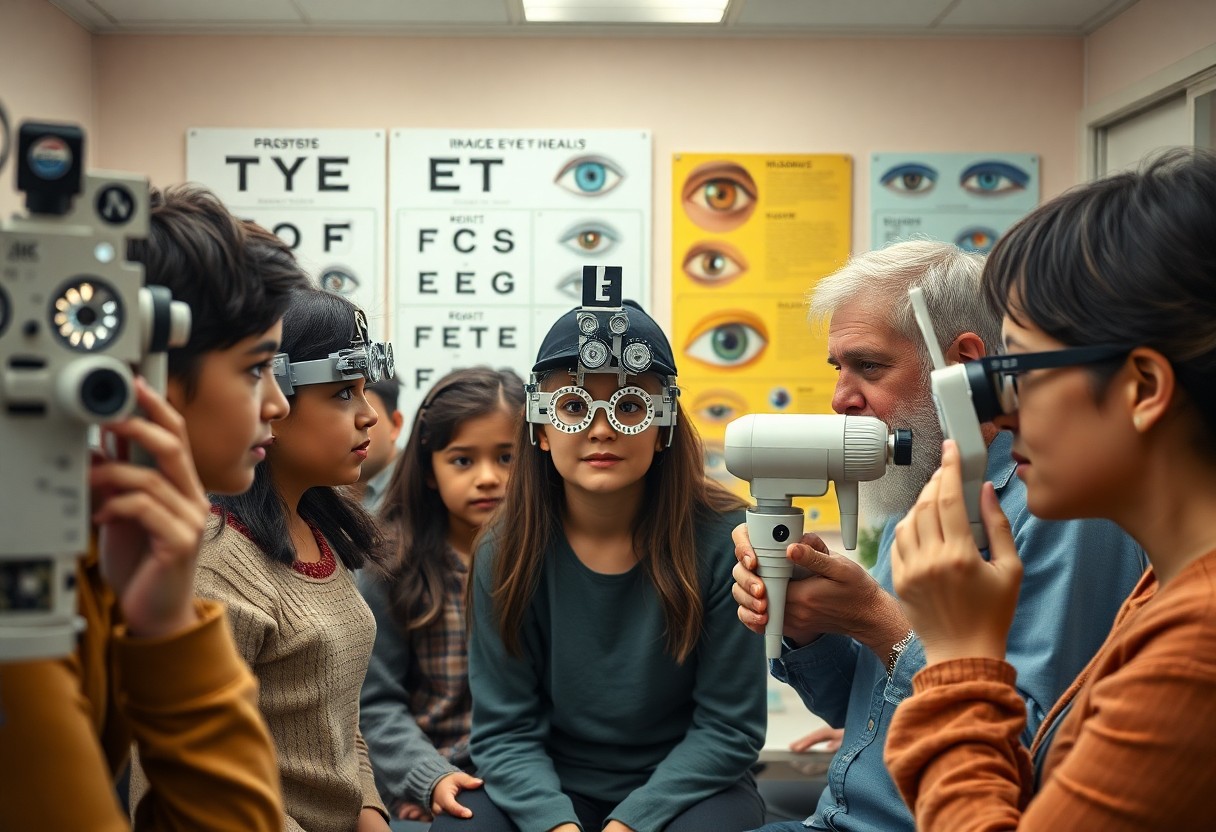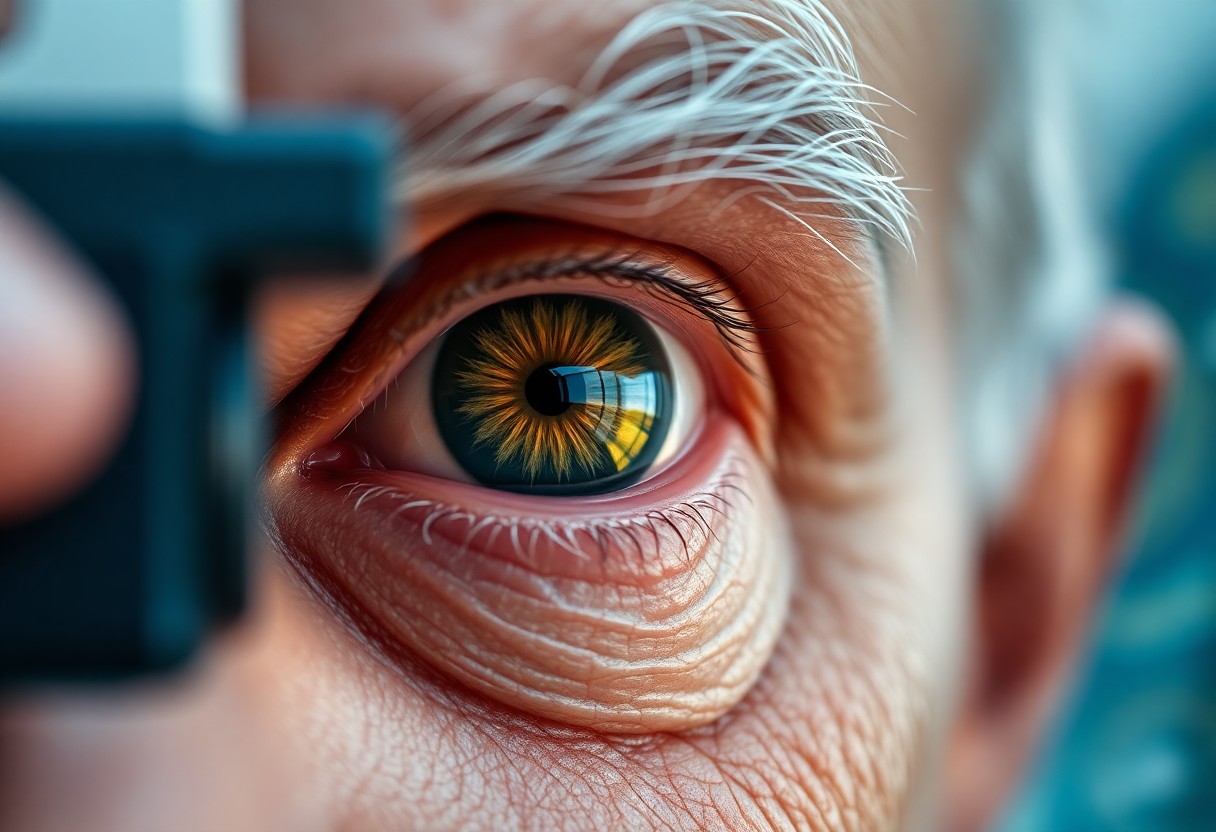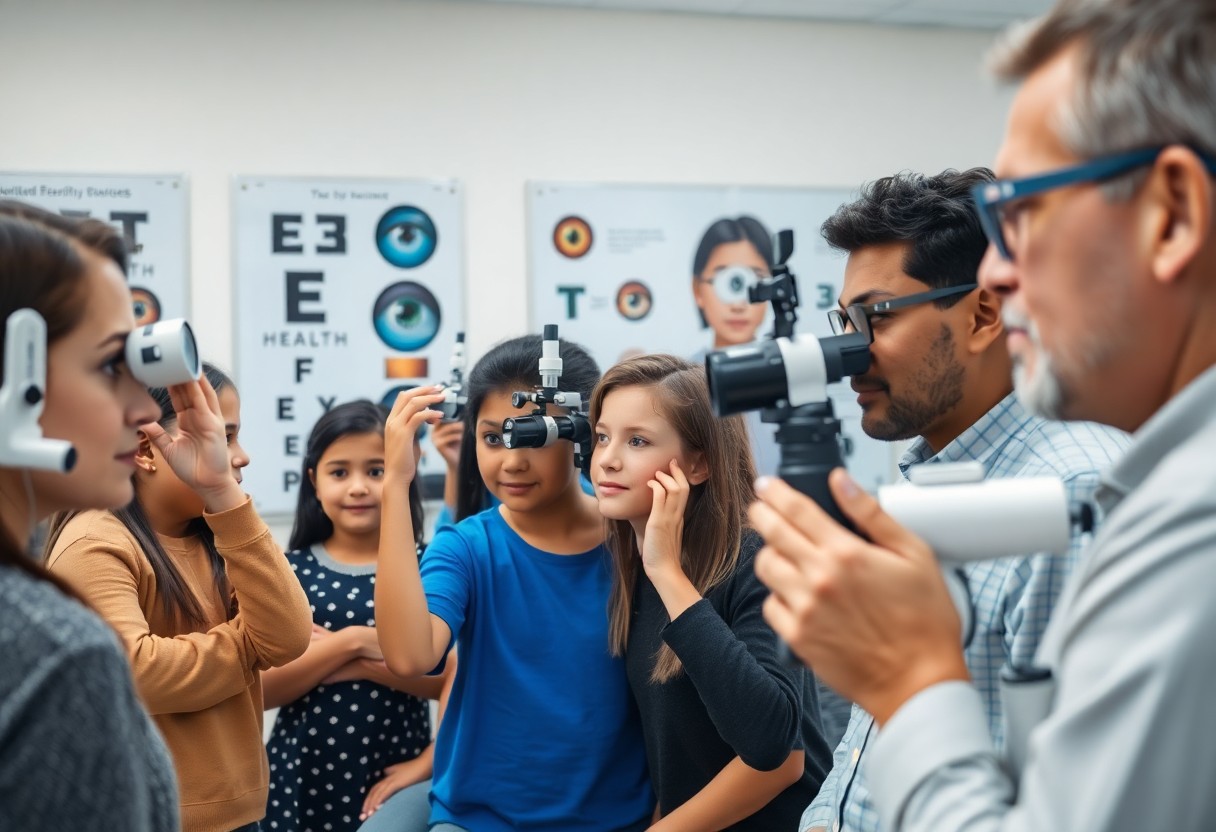Just as your body changes with age, so do your eye health needs. This comprehensive guide will equip you with important insights and actionable tips to maintain optimal vision throughout your life. From childhood to senior years, understanding the unique requirements of your eyes at every stage will empower you to make informed decisions about your eye care and overall well-being.

Key Takeaways:
- Regular eye exams are vital for maintaining eye health throughout all life stages.
- Diet and nutrition play a significant role in preserving vision and preventing eye diseases.
- Protecting eyes from harmful UV rays and blue light is important, especially with increased screen time.
- Common eye conditions can vary by age, requiring tailored approaches for treatment and prevention.
- Staying informed about genetic and lifestyle factors can enhance eye care strategies.
The Development of Vision Through Life Stages
Infants and Early Childhood: Building Blocks of Visual Development
Visual development begins at birth, with infants initially seeing only blurry shapes. By six months, their vision sharpens, enabling them to focus on faces and colorful objects. Encouraging visual stimulation through toys and interactions is imperative during this stage. By age three, children typically achieve 20/40 vision, developing depth perception and coordination. Regular pediatric eye exams help catch any developmental issues early.
Adolescents to Young Adults: Eye Strain and Screen Exposure
Your teenage years bring an increase in screen time, often resulting in digital eye strain. Symptoms include dryness, headaches, and blurred vision. Adjusting the position of screens and adhering to the 20-20-20 rule, which suggests looking at something 20 feet away for 20 seconds every 20 minutes, can alleviate discomfort. Prioritizing breaks and using proper lighting can also help protect your eye health during prolonged use of digital devices.
Adolescents are particularly vulnerable to eye strain due to their heavy use of smartphones, computers, and tablets for both education and entertainment. Studies indicate that over 60% of teenagers experience symptoms of digital eye strain, with increased time in front of screens often linked to declining visual acuity. Combining ergonomic adjustments with routine eye exams allows you to address potential vision problems early, ensuring your vision stays sharp throughout these formative years.
The Crucial Role of Nutrition in Eye Health
Nourishing your body with the right nutrients can significantly impact your eye health. Foods rich in antioxidants, vitamins, and minerals support vision and help prevent age-related conditions. Incorporating a diet filled with colorful fruits and vegetables, whole grains, and healthy fats is important. For a deeper understanding of how nutrition affects your vision at different life stages, check out Your Eyes at Every Age: A Friendly Guide to Vision Changes.
Essential Vitamins and Minerals for Optimal Vision
Dietary Changes to Combat Common Eye Conditions
Making dietary adjustments can effectively reduce the risk of prevalent eye issues. Incorporating leafy greens, fish high in omega-3s, and nuts into your meals can be a proactive measure against conditions like macular degeneration and cataracts.
Strategies for combating common eye conditions often involve specific dietary choices. For instance, increasing your intake of dark leafy greens like kale and spinach can prevent macular degeneration due to their high lutein content. Fatty fish, such as salmon and sardines, provide important omega-3 fatty acids that support retinal health and reduce dry eye symptoms. Simple changes, like snacking on nuts or bright fruits, can also promote robust eye health by delivering vital antioxidants. Adopting a balanced diet rich in these components not only protects your vision but enhances your overall well-being.

The Ageing Eye: Navigating Vision Changes
As you age, your eyes undergo various changes that can impact your vision. You may notice difficulty focusing on nearby items, an increase in glare sensitivity, or more persistent dry eyes. These adjustments are often part of the natural aging process, but understanding them can help you manage potential vision challenges more effectively. Regular check-ups can assist in monitoring these changes and maintaining your eye health.
Common Age-Related Eye Diseases You Should Know
Cataracts, glaucoma, and age-related macular degeneration (AMD) are some of the most common age-related eye diseases. Cataracts cause cloudiness in the lens, leading to blurry vision. Glaucoma involves damage to the optic nerve, often linked to elevated eye pressure, while AMD affects the central vision, making it difficult to read or see fine details. Being informed about these conditions is necessary for timely intervention.
Preventative Measures and Lifestyle Changes for Seniors
Incorporating healthy habits can significantly enhance your eye health as you age. Regular eye exams, a diet rich in vitamins C and E, omega-3 fatty acids, and antioxidants, and protecting your eyes from UV light can help prevent common eye diseases. Additionally, staying active, maintaining a healthy weight, and avoiding smoking all contribute to better vision and overall eye health.
Engaging in physical activity not only supports general health but also improves blood circulation, benefiting your eye health. Nutrition plays a key role; consider incorporating leafy greens, fish, nuts, and citrus fruits into your meals. Protecting your eyes from harmful UV rays with sunglasses, and using artificial tears for dry eyes, can drastically improve comfort and vision quality. Making these lifestyle changes can empower you to safeguard your vision against the wear and tear of aging.

Protecting Your Vision in a Digital World
Understanding Digital Eye Strain and Its Symptoms
Extended screen time can lead to digital eye strain, a condition affecting many individuals who regularly use computers, tablets, and smartphones. Symptoms often include discomfort, dryness, blurred vision, and headaches. Experts estimate that over 50% of people who spend more than two hours a day on screens experience some level of eye strain, highlighting the growing need for awareness and preventive measures.
Practical Solutions for Reducing Screen Time Effects
Implementing simple strategies can significantly alleviate the effects of digital eye strain. Adjusting your screen settings, maintaining optimal lighting, and taking regular breaks using the 20-20-20 rule—looking at something 20 feet away for 20 seconds every 20 minutes—are effective methods. Additionally, using anti-reflective lenses and ergonomic furniture can further enhance comfort during screen use.
To effectively manage screen time impact, consider blue light filters or specialized computer glasses that reduce glare and block harmful wavelengths. Regular breaks and incorporating eye exercises can also improve comfort and productivity. Furthermore, setting specific limits on recreational screen usage outside of work can help balance your overall screen time, promoting healthier habits for both your eyes and your well-being.
The Intersection of Eye Health and Overall Wellness
Your eye health plays a significant role in your overall wellness, as the eyes can reflect signs of systemic health issues. Conditions such as diabetes, hypertension, and autoimmune diseases often manifest in ocular symptoms, highlighting the importance of regular eye examinations. Maintaining visual health contributes to enhanced well-being, better mental health, and improved quality of life, reinforcing the connection between sight and health.
The Connection Between Systemic Diseases and Vision
Mental Health Impacts: Stress, Anxiety, and Vision Issues
Final Words
On the whole, understanding eye health is crucial for maintaining your vision throughout your life. By being proactive in your care and staying informed about changes in your eyesight, you can make better decisions for your wellbeing. This guide equips you with the knowledge to nurture your eye health for every age, empowering you to seek appropriate care and practice preventative measures. Prioritizing your vision will not only enhance your quality of life but also ensure you can fully engage with the world around you.
FAQ
Q: What are the common eye health issues for children?
A: Common eye health issues in children include refractive errors like nearsightedness and farsightedness, color blindness, amblyopia (lazy eye), and strabismus (crossed eyes). Early detection through regular eye exams is vital for effective treatment.
Q: How often should adults have eye check-ups?
A: Adults should have comprehensive eye exams every 1 to 2 years, depending on age, risk factors, and vision changes. Those over 60 or with existing conditions may require more frequent visits.
Q: What lifestyle choices can improve eye health?
A: Key lifestyle choices include eating a balanced diet rich in vitamins A, C, and E, wearing sunglasses to protect against UV rays, quitting smoking, managing chronic conditions, and taking regular breaks from screens to reduce eye strain.
Q: What are the signs of vision problems in seniors?
A: Seniors may exhibit signs of vision problems such as difficulty reading, blurry vision, increased sensitivity to glare, trouble seeing at night, and frequent changes in prescription eyewear. Regular screenings can help detect issues early.
Q: How can technology impact eye health?
A: Extended screen time can lead to digital eye strain, with symptoms like dry eyes, headaches, and blurred vision. To mitigate these effects, follow the 20-20-20 rule: every 20 minutes, look at something 20 feet away for 20 seconds, and ensure proper lighting and screen positioning.

Leave a Reply